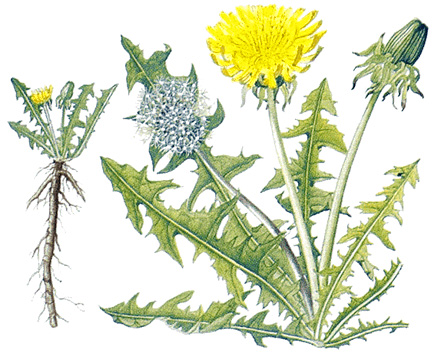Dandelion is a bright-yellow wildflower that grows in lawns and meadows. Throughout the temperate regions of the world, gardeners usually consider the dandelion a troublesome weed that is difficult to control. This article discusses the common dandelion. Many other wildflowers are also called dandelion.

The early colonists brought the dandelion to America from Europe. Its name comes from the French words dent de lion, meaning lion’s tooth. It has smooth leaves with coarse notches, which look like teeth. The golden-yellow head is really a cluster of flowers. The flowers, when they mature, form feathered, cottony seeds that the wind carries far and wide. The dandelion has a smooth, straight, and hollow stem, and the entire plant contains a white, milky juice. The root is long, thick, and pointed and has hairlike branches growing from it.
The dandelion differs from most other plants in the way it reproduces. Its ovaries form fertile seeds without having to be pollinated (see Pollen).
Young dandelion leaves can be used in salads or they can be cooked. They taste best when they are young, before the plant has blossomed. Wine sometimes is made from the dandelion flowers.
In order to keep dandelion plants from growing on lawns, gardeners must cut deep into their roots. The roots grow to about 3 feet (91 centimeters) long in soft, rich earth. Slicing close under the surface only encourages the plants to grow. Gardeners sometimes spray dandelions with chemicals that destroy the dandelions but do not harm grass.
